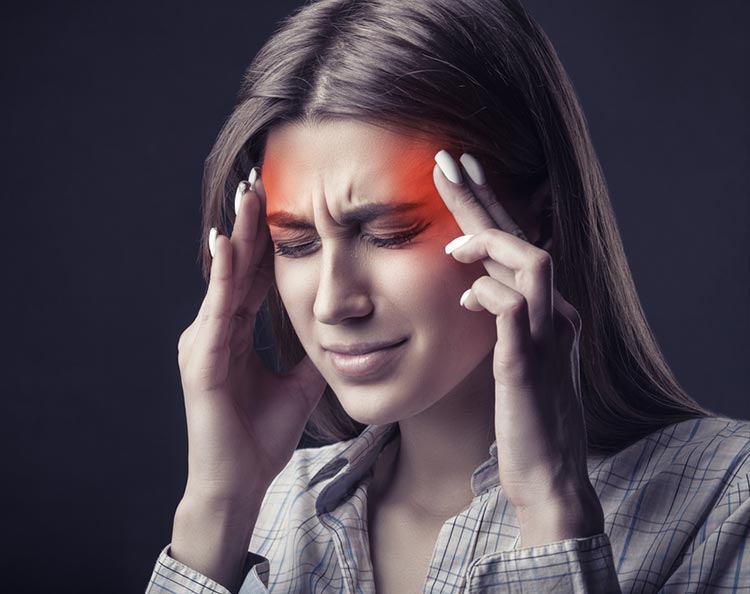
Headache
Headache is pain in any region of the head. Headaches may occur on one or both sides of the head are isolated to a certain location, radiate across the head from one point, or have a vise-like quality. A headache may be a sharp pain, throbbing sensation or dull ache. Headaches may appear gradually or suddenly, and they may last less than an hour or for several days.
Symptoms
There are many different types of headache that can be experienced, affecting different areas of the head in different ways, with differing intensities for different amounts of time. Here are the characterizing symptoms of some of the more prominent forms of headache -
Tension
Tension-type headaches are the most common form of primary headache. They are described as feeling like a tight band around the head, with a constant, dull ache being felt on both sides. Sometimes the pain spreads to or from the neck. They normally begin slowly and gradually in the middle of the day. Tension-type headaches can be either episodic or chronic.
Migraine
Migraine is the second most common form of primary headache and has been ranked as the seventh-highest specific cause of disability worldwide. They can last for any amount of time between a few hours and 2-3 days.
A migraine headache may cause a pulsating, throbbing pain that can occur on either one side or both sides of the head. The aching can also be accompanied by blurred vision, lightheadedness, nausea and sensory disturbances.
Rebound headache
Rebound or medication-overuse headaches are the most common secondary headache, caused by the excessive use of medication to treat headache symptoms. They usually begin early in the day and persist throughout, improving with pain medicine but worsening when its effects wear off.
Cluster headache
The pain caused by cluster headaches is severe, often described as sharp or burning, and is normally located in or around one eye. The affected area can become red and swell, the eyelid can droop and the nasal passage on the affected side can become stuffy and runny.
Treatment and prevention
The most common methods recommended for treating headaches are rest and pain relief medication. It is important to follow the advice of health care providers as overusing pain relief medication can lead to rebound headaches. In extreme cases, a short hospital stay may be required in order to do this.
Self-care
There are a number of things that can be done within the daily routine that can ease the pain of headaches:
- Apply a heat pack or ice pack to your head or neck
- Avoid things that are stressful
- Eat regular meals
- Exercise regularly
- Get enough rest and regular sleep
- Have a hot shower

